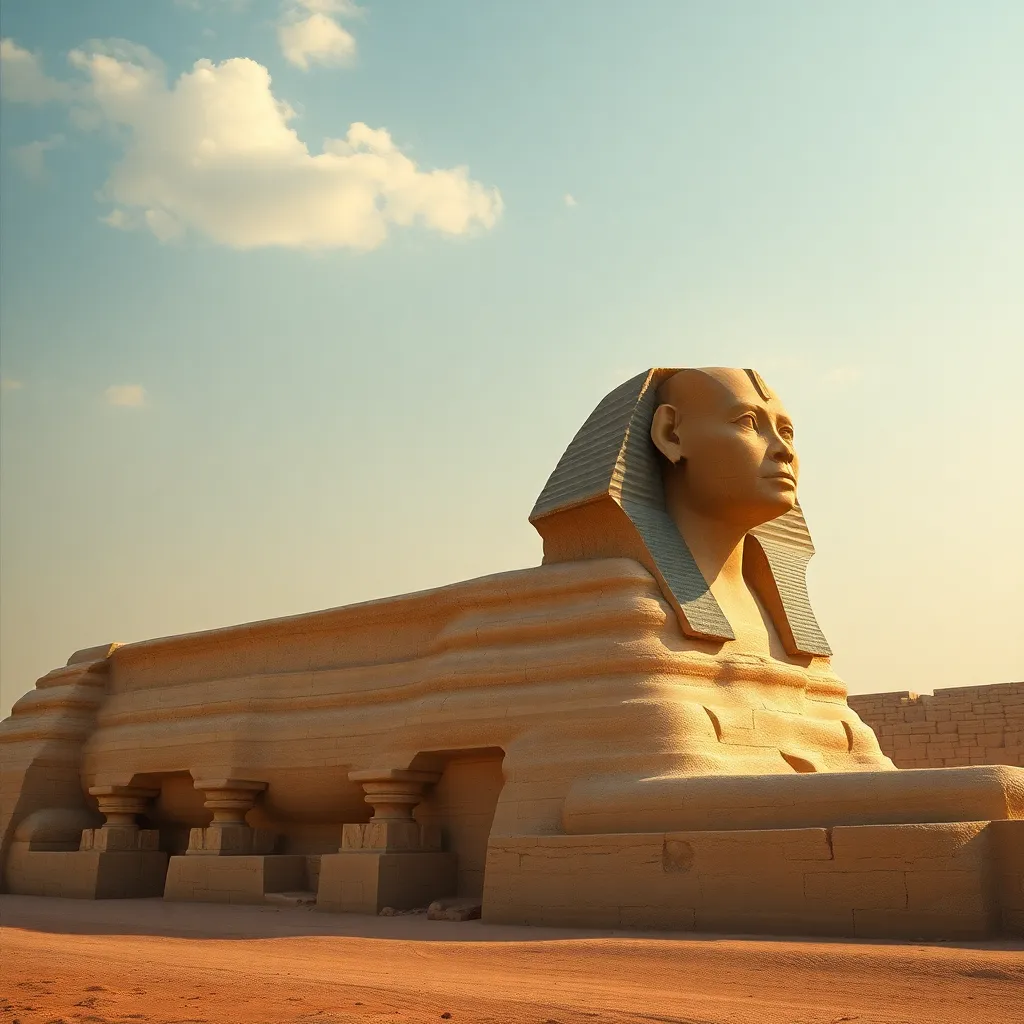The Sphinx: A Symbol of the Eternal Quest for Truth
I. Introduction
The Sphinx, an enigmatic figure with the body of a lion and the head of a human, stands as one of the most iconic symbols of ancient Egypt. This magnificent creature, particularly the Great Sphinx of Giza, has captivated the imagination of countless generations. Its significance stretches beyond mere architecture; it embodies the profound human quest for truth and understanding.
Historically, the Sphinx has served various roles within the cultural and spiritual context of ancient civilizations, particularly in Egypt. It was not only a guardian of sacred spaces but also a participant in the rich tapestry of mythology that surrounded it. The Sphinx represents humanity’s unending search for truth and understanding, a theme that resonates through time.
II. Historical Origins of the Sphinx
The Great Sphinx of Giza, constructed around 2500 BC during the reign of Pharaoh Khafre, is the largest monolithic statue in the world. This colossal structure was carved from limestone and is believed to serve multiple purposes, including guarding the Giza Plateau and representing the pharaoh’s divine status.
Early myths and legends surrounding the Sphinx highlight its importance in ancient Egyptian culture. Some narratives depict the Sphinx as a wise figure, while others emphasize its role in guarding the secrets of the afterlife. It became intertwined with funerary practices, symbolizing protection and the passage into the afterlife.
III. The Symbolism of the Sphinx
The Sphinx is rich in symbolism, particularly in its physical features. The lion’s body represents strength and courage, while the human head signifies intelligence and wisdom. This duality encapsulates the complex nature of existence and the balance between physical prowess and mental acuity.
As both a guardian and a riddle, the Sphinx embodies a duality that prompts contemplation. It stands watch over sacred spaces, challenging those who seek to enter. This role connects closely with the concept of truth in mythology, as the Sphinx often poses questions that must be answered to unlock deeper understanding.
IV. The Riddle of the Sphinx
Perhaps the most famous association with the Sphinx is the riddle posed to Oedipus in Greek mythology: “What walks on four legs in the morning, two legs at noon, and three legs in the evening?” This riddle encapsulates the human journey through life, symbolizing the stages of existence.
The philosophical implications of this riddle are profound. It encourages reflection on the nature of humanity and existence, urging individuals to consider their own journeys and the truths they uncover. The riddle serves as a metaphor for the search for knowledge and self-awareness, making it a timeless inquiry.
V. The Sphinx in Art and Literature
The Sphinx has been depicted across various cultures and time periods, often symbolizing mystery and wisdom. In ancient art, it was commonly portrayed in sculptures and reliefs, representing not just the pharaoh but the ideals of strength and intellect.
In literature and poetry, the Sphinx’s influence is evident in works that explore themes of knowledge, fate, and the human condition. Modern storytelling continues to draw inspiration from the Sphinx, showcasing its lasting legacy in narratives that reflect the quest for truth.
VI. The Sphinx in Modern Culture
Today, the Sphinx stands as a major tourist attraction, drawing millions to Giza each year. Its presence impacts contemporary society, reminding us of our historical roots and the enduring nature of human curiosity.
In popular media, the Sphinx is often symbolically represented, serving as a metaphor for modern existential questions. It challenges individuals to confront their own truths and engage in the exploration of knowledge in a world filled with uncertainty.
VII. Philosophical Perspectives on Truth
Philosophically, truth is a complex concept with various interpretations. Different schools of thought, from realism to relativism, offer unique perspectives on what constitutes truth and knowledge. The Sphinx serves as a lens through which these philosophical inquiries can be explored.
By examining the Sphinx, one can engage with questions of existence, knowledge, and the nature of reality, making it a relevant figure in contemporary discussions about truth.
VIII. Conclusion
In summary, the Sphinx stands as a powerful symbol of humanity’s quest for truth. From its historical origins and rich symbolism to its enduring presence in modern culture, the Sphinx invites us to explore the depths of our understanding and existence.
As we reflect on the Sphinx’s lasting legacy, we are encouraged to embrace our own pursuit of truth. In a world full of questions, let us engage with the mysteries that surround us and seek to uncover the answers that lie within.
https://www.youtube.com/watch?v=AhuPEp4ct6U




